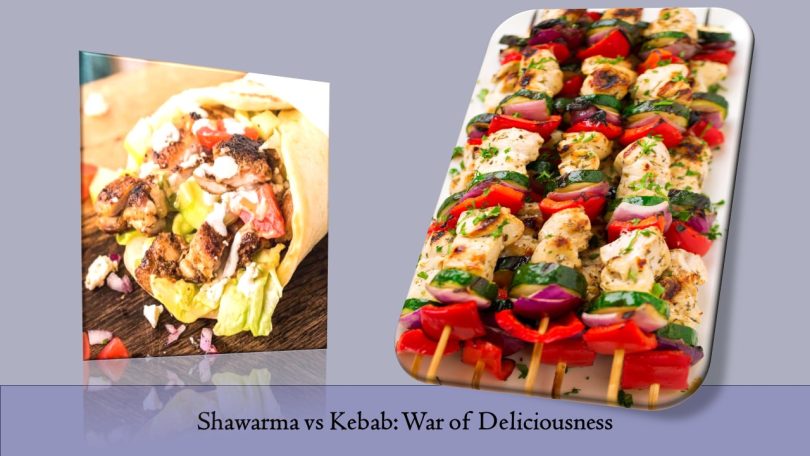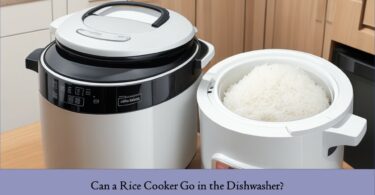When it comes to the realm of mouthwatering, globally beloved dishes, two contenders rise above the rest: Shawarma and Kebab. These delectable delicacies have captured the hearts (and stomachs) of food enthusiasts around the world, offering a tantalizing array of flavors and textures. In this article, we delve into the origins of Shawarma and Kebab, explore their differences, and help you understand why these dishes continue to be cherished by food lovers everywhere.
Origin of Shawarma and Kebab:
Both Shawarma and Kebab have a rich history, originating from different regions of the world. Shawarma traces its roots back to the Middle East, particularly the Levantine region, including countries like Lebanon, Turkey, and Syria. This iconic dish consists of succulent, marinated meat (traditionally lamb, but chicken and beef are also popular) that is stacked on a vertical rotisserie and slow-cooked to perfection. The meat is then thinly sliced and served in a variety of ways, such as wrapped in warm pita bread or accompanied by a vibrant assortment of fresh vegetables and sauces.
On the other hand, Kebab has its origins in Central Asia, particularly Persia (modern-day Iran). This versatile dish involves skewering small pieces of marinated meat (which can include lamb, beef, chicken, or even fish) and grilling them over an open fire or on a charcoal grill. The kebab’s marinade, seasonings, and cooking techniques may vary across different regions, giving rise to a diverse range of flavors and styles.
Difference Between Shawarma & Kebab:
While Shawarma and Kebab share some similarities, there are distinct differences that set them apart. Firstly, their cooking methods differ significantly. Shawarma is cooked on a vertical rotisserie, allowing the meat to slowly rotate and cook in its own juices, resulting in tender and juicy slices. On the other hand, Kebab is typically prepared by grilling the meat on skewers, giving it a distinct smoky flavor and a slightly charred exterior.
Secondly, the meat used in Shawarma and Kebab can vary. Shawarma traditionally features thinly sliced, stacked meat, often marinated with a blend of aromatic spices and herbs. In contrast, Kebab involves skewering smaller chunks of marinated meat, allowing for a more diverse range of meat choices and cooking styles.
Furthermore, the seasonings and flavors in Shawarma and Kebab differ due to their regional influences. Shawarma often incorporates a harmonious blend of spices like cumin, paprika, garlic, and lemon, resulting in a flavorful and aromatic experience. Kebab, on the other hand, may feature regional spice blends such as sumac, saffron, and turmeric, lending unique and distinct flavor profiles.
Can you make Shawarma or Kebabs at home?
Absolutely! Both Shawarma and Kebabs can be prepared in the comfort of your own kitchen. Here’s a basic guide on how to make them:
Shawarma:
- Choose your preferred meat: Typically, Shawarma is made with lamb, chicken, or beef. Select boneless cuts for easier slicing.
- Marinate the meat: Prepare a marinade using a combination of spices like cumin, paprika, garlic, lemon juice, olive oil, and yogurt. Coat the meat thoroughly with the marinade and let it sit in the refrigerator for at least a few hours or overnight to allow the flavors to penetrate.
- Cook the meat: Traditionally, Shawarma is cooked on a vertical rotisserie. However, you can replicate the process by placing the marinated meat on a baking sheet and roasting it in the oven at a moderate temperature (around 180-200°C/350-400°F) until it is cooked through and has a golden exterior. You can also pan-fry the meat if desired.
- Slice and serve: Once cooked, let the meat rest for a few minutes before thinly slicing it. Serve the Shawarma in warm pita bread or flatbread, accompanied by your choice of fresh vegetables, pickles, and sauces.
Kebabs:
- Choose your meat and cut it into small pieces: Select your preferred meat, such as lamb, beef, chicken, or fish, and cut it into bite-sized cubes.
- Prepare the marinade: Create a marinade using a blend of spices, herbs, yogurt, lemon juice, and oil. Coat the meat cubes with the marinade, ensuring they are well-covered. Allow the meat to marinate in the refrigerator for at least 1-2 hours.
- Skewer the meat: Thread the marinated meat onto skewers, leaving a little space between each piece. If using wooden skewers, remember to soak them in water beforehand to prevent burning.
- Grill or broil the kebabs: You can cook the kebabs on a preheated grill or broil them in the oven. Grill the skewers over medium-high heat, turning occasionally, until the meat is cooked to your desired level of doneness and has a beautiful char on the edges.
- Serve and enjoy: Remove the kebabs from the skewers and serve them with a side of rice, salad, or warm bread. Consider garnishing with fresh herbs and a squeeze of lemon for an extra burst of flavor.
With these simple steps, you can recreate the magic of Shawarma and Kebabs in your own kitchen, allowing you to customize the flavors and enjoy these beloved dishes whenever you crave them.
Concluding Remarks:
In the Shawarma vs Kebab debate, both dishes hold their own distinctive charm and irresistible flavors. Whether you prefer the succulent, slow-cooked delights of Shawarma or the tantalizing grilled morsels of Kebab, these dishes offer a delightful culinary experience that caters to different palates and preferences.
Regardless of which dish you choose, both Shawarma and Kebab have rightfully earned their place in the hearts of food lovers worldwide. So, the next time you’re faced with the choice between Shawarma and Kebab, savor the experience, indulge in the flavors, and relish the cultural heritage behind these exceptional dishes.
In the eternal contest of Shawarma vs Kebab, both reign supreme, satisfying the cravings of food enthusiasts with every delectable bite.




Leave a Comment